Welcome to
Learn How the Pros Launch ProductsHow to maximize sales for your new product or service
Module One
Steps for Success in the Product Pre-Launch Phase
We’ll be going through the 3 main phases of a product launch over the course of the next 3 modules:
- The Pre-Pre Launch & Pre-Launch Phase
- The Launch Phase
- The Post-Launch Phase

If you want to ensure a stress-free launch that also maximizes sales, the Pre-Pre Launch is critical for working out the bugs with your friends and family first. Then the Pre-Launch Phase is where you will do most of your hard work.
We’re going to cover 3 key components to the pre-launch that are essential for your success:
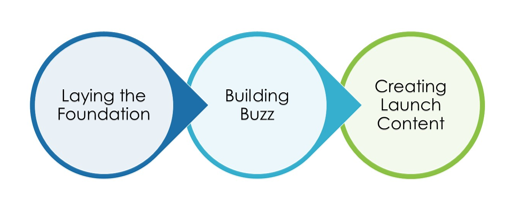
- Laying the Foundation
- Building Buzz
- Creating Launch Content
1. Laying the Foundation
If you already have your product or service completed, you probably also have most of your ‘foundation’ tasks done too. But you may not have prepared them as thoroughly as possible for a smooth launch. So let’s do a quick overview of each:
Define Your Target Market
Clearly define the target market that will benefit most from your product. Create a profile of your ideal customer as an individual who you could speak directly to when talking about your product. Your customer profile should include:
- Demographic information such as age, gender, location, income, occupation, and so on.
- Psychographic information such as fears, worries, hopes for the future, how the person sees themselves, etc.
- Behavioral information, especially as it pertains to the products they buy. This includes how often they buy products such as yours, how they feel about the products they buy, what they feel is expensive, etc.
A brief example would be something like: “Joe is a small business owner in the American Midwest who earns $60,000 a year, struggles to balance his time between work and family, and doesn’t consider himself tech-savvy. His biggest challenge with his business is finding new ways to connect with his customers after they’ve purchased something. He’s tried different ideas in the past, but never has the time to follow through and learn how to implement them.”
Develop Messaging for Your Product
From the very start, you need to create clear and consistent messaging for your product or service. This messaging should communicate its unique benefits to the buyer. What need does it address or problem does it solve for your target market? The message you send clearly defines these benefits and communicates them to your target audience.
For example, let’s assume that you’re selling a project management system for small businesses. You know that your customers find project management systems hard to use and your main selling point is that yours is user-friendly. Your messaging might be something like: “A simple, no-frills solution for managing your products headache-free.” This statement sums up the unique value you offer your customer.
Be careful that your message doesn’t make claims your product can’t live up to. It’s easy to get carried away listing every possible way your product makes life better for everyone. Put yourself in the shoes of your target buyer. After they purchase your product, how are they going to feel? How will it change their life? Make your message realistic and make sure that your product lives up to its claims now, long before your actual product launch.
Your Marketing Budget
As part of laying the foundation for your launch, you need to create a marketing budget that will cover all expenses leading up to and through the completion of launch. This budget is solely for marketing, not product development. Make sure that all items in the budget are related only to marketing.
It may include things like:
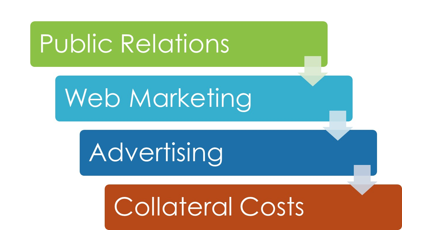
- Public Relations – Hiring a PR firm, press release development, press kit materials, a customer feedback and review program, public appearances or press tours.
- Web Marketing – Online advertising, search engine optimization costs, website development for the product site, or changes to existing websites.
- Advertising – Advertisement in print, television and radio, offline marketing campaigns.
- Collateral Costs – These include things like brochures, white papers, demos, product samples, training or other support for your sales force or affiliates.
When setting amounts for your budget, it’s always a good idea to pad the amounts in case there are unforeseen expenses or difficulties.
Create and Implement a Plan for Delivery Channels
Finally, create a plan and schedule for working with distributors, retailers, trainers, and affiliates who are going to be helping you promote your product. Create and distribute all of the materials they need to get started and make yourself available in case they have questions or concerns.
If you’re offering a digital or ecommerce product, make sure that your ordering system and shopping cart work. Test the purchase system yourself early and work out any bugs or problems. You need it to be operating smoothly on the day of your product launch. Make sure all software programs you’re using are up-to-date and that none will expire before the launch.
There may be training involved. You might have a product for which your distributors or affiliates need specific training in order to sell. If this is the case, schedule training sessions and prepare the contents of these sessions well in advance of the launch, or even the pre-launch. Add these to your calendar.
Prepare partners, early adopters, influencers and others who have a stake in the product launch with everything you need them to say and do before, during, and after the launch. This includes giving them any training they need on how to use your product or how to market it, as well as prepared content you’ll give them to use.
2. Building Buzz
One of the major purposes of your pre-launch phase is to let as many people as possible know that a new product will be introduced on a certain date in the near future, and to promote this product heavily to build excitement before it’s officially released. This includes the efforts of any affiliates who are also selling the product.
The idea behind your buzz-building strategy should be to get people interested and eager, so that the minute it goes on sale, they’re making purchases. The goal is to make each customer want to be the first to buy.
How long should the pre-launch period last? If a pre-launch extends past two months, it’s likely to lose momentum and fizzle out before the product launch. This is just too long for the build-up of buzz and anticipation. However, if the product is small, a pre-launch could be only one or two weeks. For our purposes here, we’re recommending one to two months. You can think of this as a standard amount of time for a pre-launch.
For creating buzz around your new product so that people will be eager to buy, there are a few things you can do:
Develop a Website Strategy
Create a separate section on your website’s main page to create buzz about the new product launch. This can either be a part of your home page or a link to a new page that offers the latest news about the launch.
The content on this page could be things like:
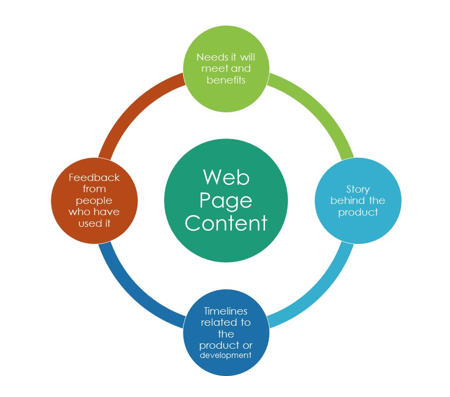
- What specific needs it will meet and what benefits it offers
- The story behind the product. This could be the story of its development, how you got the initial idea, or how it helped a particular customer. A great way to tell this story is through video.
- Timelines related to the product or its development
- Feedback from people who have used it in the form of testimonials or reviews
The whole purpose of this page and its content is to interest people in the product. You should update it frequently throughout the course of the pre-launch. During the launch itself, you would then insert a link to a sales page, or redirect the whole page.
Create a Press and Media Plan
You need to craft a press and media plan that alerts people to your upcoming launch and when the product actually launches. Your plan should address three parties: Your existing customers, new prospects, and the general public.
Existing customers are the easiest to sell to and with the least amount of expenditure of resources. What are the best ways to reach your existing customers? If you have an email list, this is a great place to start since email is so personal. You might also communicate with your existing customers through flyers, direct response, or social media (which we’ll discuss later). Your efforts here should focus on informing them about the launch and getting them excited about the product.
Your product will also serve as a magnet to attract new customers. They will not only buy the product but also hopefully become new loyal customers as well. Refer to your target customer profile and ask yourself where you’re likeliest to find these people both online and off. Decide where you will find them and how you will reach them.
In addition to targeting the specific types of people you identified in your target customer persona, you should also reach out to the media to inform them about your product. Traditional ways to reach out to the media include:
- Publishing press releases which can be distributed offline to local media outlets and also published online on PR directories
- Advertising with local news stations, radio stations, newspapers, trade journals, or magazines
- Appearing at local events and trade conferences and spreading the word there
Build a List of Qualified Prospects
Start building an email or contact list of qualified prospects. If you’re already selling other products, look at your current customers. If you have an email list, segment the list and identify which members of the list are qualified buyers.
For example, you might create a segment of your list of previous customers. You could create segments for those who most closely match your customer profile. Another idea is to create a separate segment for people who have contacted you before or who engage most with you.
A great way to qualify your prospects based on objective data is to offer a free gift that’s related to your product. It could be a free download or other digital product that addresses the same needs. Make this offer and see who takes you up on it. Then move or copy them into a list or segment that shows they’re interested in this topic.
You can do this with your social media followers, your blog readers, or anywhere else you have contact with your target market.
Try to get feedback from your qualified prospects on how your free gift helped. The people who enjoy the related gift are most likely to buy your product, and you should spend more time marketing to that type of customer.
Create a Dynamic Social Media Plan
Social media is a key part of your pre-launch strategy. It gives you the chance to update the public in real-time about the development of your product and maintain two-way communication with them. You can interact with them through comments and this helps a great deal in getting them excited and ready to buy your new product.
Some of the types of content you can produce for social media include:
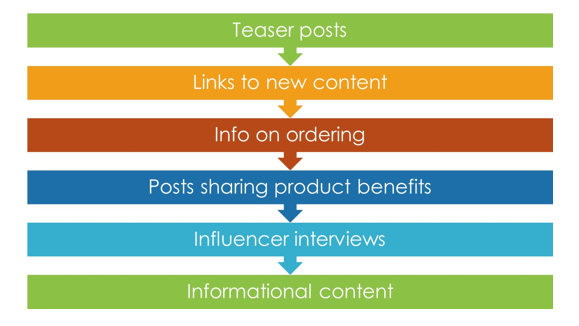
- Teaser posts that reveal the product bit by bit
- Links to new content about your product such as blog posts or videos
- Information on when and how customers can order the product
- Posts that share individual benefits of the product
- Interviews or other content with influencers or celebrities in your niche
- Purely informational content that’s related to your product.
There are many different ways to engage with your audience through social media pre-launch.
- Create a separate Facebook page linked to your business page. This page will be solely for the product launch and will include updates on the launch.
- Create a LinkedIn page from your company page or Google+ where you can post updates and get feedback from your connections.
- Look for other social media outlets where you can reach new people and generate buzz, such as forums, Twitter, Facebook groups and communities, and so on.
- Provide the product to trustworthy bloggers with big followings, social media influencers, and celebrities in your community, and ask them to mention your product. This is a great way to lend the product credibility, gain valuable feedback, and boost your buzz-generating efforts.
When planning the schedule for your social media, look at signs of engagement such as likes, comments, shares, etc. See what frequency and times get the most interaction and adjust your schedule accordingly.
Build Anticipation with Content
Aside from social media, you can build anticipation and eagerness to buy your new product through any outlet where you can be visible to your prospects. That includes your blog and your email communications.
Create a blog series that’s only about this product and documents its development through all of its stages. Promote this blog along with your other content through your usual channels.
Earlier, we talked about segmenting your list to identify potential prospects. During the pre-launch phase, you need to be sending messages to the people on your list to tell them about your product and build excitement. Establish these lines of communication right away.
Create a schedule for all of the emails and blog posts that you will send during your pre-launch, buzz-building period. Experiment with different times of day and days of the week for your communications. Once you start sending out messages, monitor the results carefully.
You’ll find your best timing by monitoring and discovering what works best with your audience but here are a few guidelines:
- Consistency is key. Whether you post or email once a day or three times a week, do it consistently.
- Weekends, lunch breaks, and evenings when people are most likely to be checking their social media or email are often the best times to post.
When marketing through email, look at your open rate, click rate, and other relevant metrics. With blog posts, look at things like bounce rates, comments, shares, and likes.
Again, remember that it’s not just about sending out messages and information content during your pre-launch. Try to establish good two-way communication with your audience. This will help to build a relationship with them in which you can get valuable feedback and insights.
Gather Feedback
During the product pre-launch phase, seek as much feedback as possible from your audience and those who have tested or used the product in its beta version.
There are two reasons you need to document your feedback. The first is that you need to use feedback in order to make changes to the product, if still under development, and to your messaging. For example, if those who have used the product think the claims are slightly unrealistic, you need to change your messaging. If your audience responds especially well to a piece of informational content related to the product or this content brings a rash of inquiries, you’ll want to repeat the effort.
The other purpose of feedback is that you can turn it into testimonials, reviews, and other content to spread the word about your upcoming launch. For example, a testimonial from a key influencer or big name in your industry is great to use as part of a press release, or you could fashion an entire press release around it. Testimonials have a big impact as content for your product launch blog or social media pages.
You can gather feedback by:

- Conducting surveys with your customers to learn about their problems and preferences.
- Offering free samples or free trials of the product and then asking customers what they thought.
- Carrying out a “soft launch” where you conduct a launch of the product or a similar product to one small segment of your market.
Pre-Launch Product Peek
Right before your launch, you should schedule a pre-launch viewing or sampling. You can do this at a meeting place or somewhere online. For this viewing, you can gather key influencers, members of the press, and others with a high profile and great deal of influence to try out your product and then leak the news to their followers.
This is an excellent strategy for giving your product launch a boost just before it’s released to the public. For many members of the public connected to you, they’ve been hearing about this product and they have some curiosity. A week or so before launch, seeing a key influencer who has actually experienced the product recommend it, they’ll be pushed off the fence and ready to buy when the big day comes.
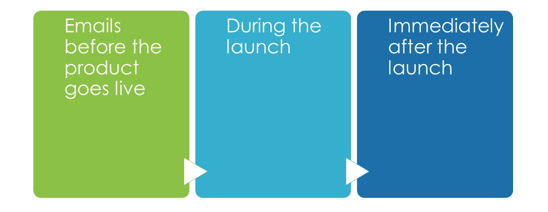
This includes emails just before the product goes live, during the launch period when people can buy the product, and immediately after the launch.
Here’s one example of a launch email sequence:
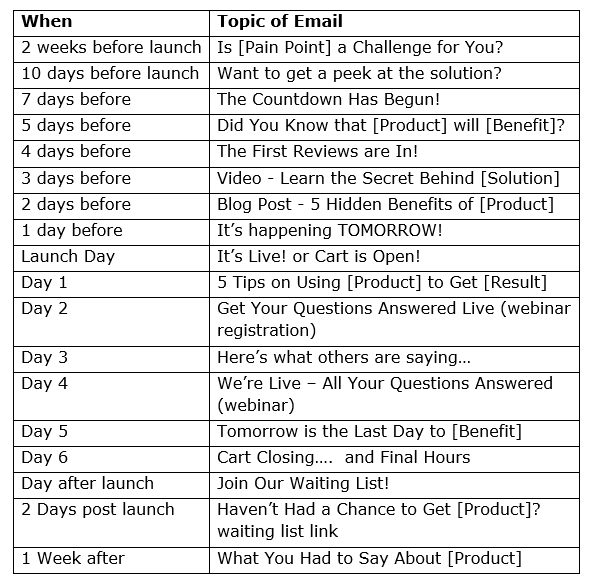
Your own launch email sequence will vary based on how many days you’re planning to have the product available for sale, or available with launch specials. However, you can follow this general pattern of anticipation, promotion, and time sensitive reminders.
Content to Boost Sales during Launch
One great way to build excitement and sales during a launch is to create special content that’s only available in that time period.
For example, you can add extras or bonuses for early purchases (for example, the first 100). This will entice people to buy early for the extra value.
You can also add bonuses that are just for people who buy during the launch, but you could announce it midway through. You’ll provide the bonus for everyone who purchased from the start, but by announcing it a little later, you can give a little incentive to people who have been hesitating.
Also, consider doing something eye-catching to gain attention and create more buzz right when your product releases. This could be a stunt, a new video, or something else that’s likely to create a sensation.
Customer Service Content
Lastly, you need to create your customer service content before your launch. This is content that helps customers when they have questions or concerns about your product. It is designed to answer their questions. Examples of customer service content include:
- FAQs – Create an FAQ that answers common questions your customers have had in the past or that you think they might have.
- Tutorials – Make tutorials that teach customers how to use your product.
By having customer service content ready during your pre-launch phase, you’ll be prepared to quickly respond to your potential buyers and new customers when they have questions. With tutorials, your new customers will get the help they need right away, even while you’re busy running your product launch.
Activity:
- Document 5 specific benefits that your product offers your customer. Use these benefits to draft the core messages that you want to communicate in all your launch marketing materials.
The message shouldn’t be about features, though you will need to include those in the details about your product. Instead, focus on the results a customer experiences after using your product. And focus on the user’s experience.
- If it hasn’t already been determined, document how you will deliver your product once it’s launched and any technology you need to set up to be able to launch and deliver it.
- Write down what testimonials you will need to acquire in order to demonstrate your product benefits.
- List 3 partners, affiliates, celebrities, influencers, or big names who can help you build excitement around your brand. What can you offer these people as an incentive for helping you in your launch promotion?
- Document what social media and other marketing channels you will use for your pre-launch phase. Eg, specific social media sites, press releases, email, advertising (online and/or print), events, flyers, blog, etc.
- Make a detailed list of all of the marketing materials and content you need to create for building buzz before your launch and for during the launch itself. Use the tactics discussed in the module as your guide:
- What content will you put on your website?
- What content will you use for press and media buzz?
- How will you build a list of qualified prospects?
- What social media content will you post?
- What other content will you create, such as email series, blog posts, videos, graphics, and slides?
- How will you gather product feedback before the launch?
- How will you give people a ‘peek’ at the product pre-launch?
- For each piece of content you identified for the launch, outline what you want to include in each, along with a deadline for creating that content. If you’ll be having someone else create it, note who that person will be also.
Cracking the Rich Code
"Whether you’ve been stuck on the sidelines waiting for the “right time” to launch your business or struggling to “generate” the life changing results from your business- This is your time to start saying “YES” to opportunity and “NO” to the noise. 100% of us entrepreneurs need answers and solutions. Join me to get updated on what it takes to prepare yourself and stay ahead of this changing business world."
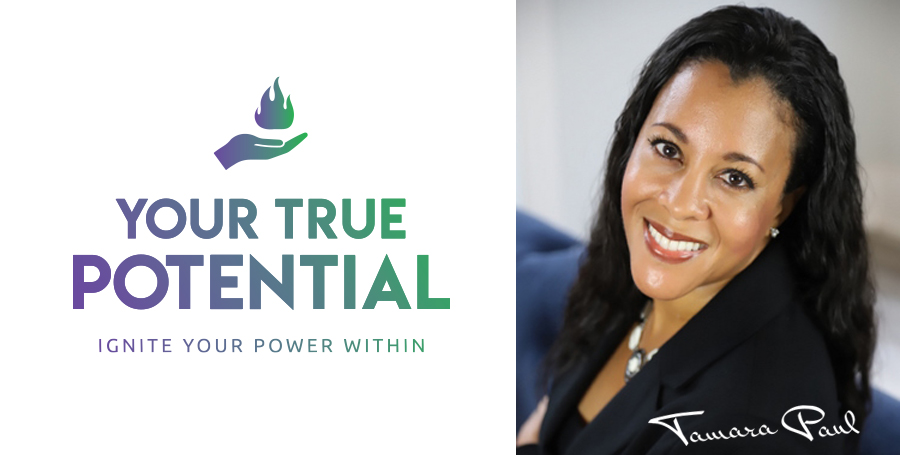
Our superpower is making you a superhero.


